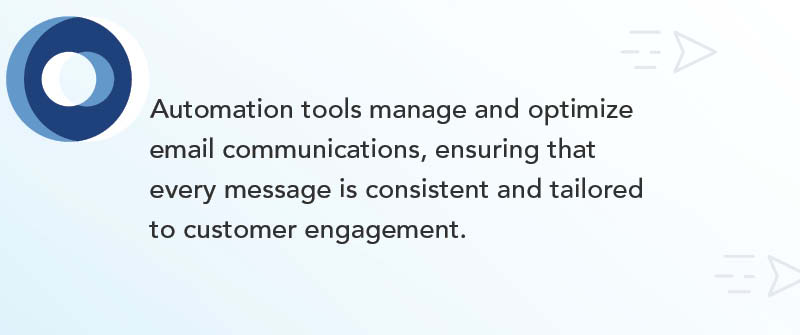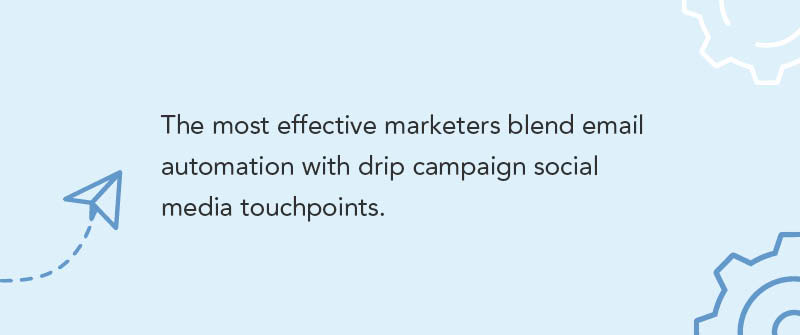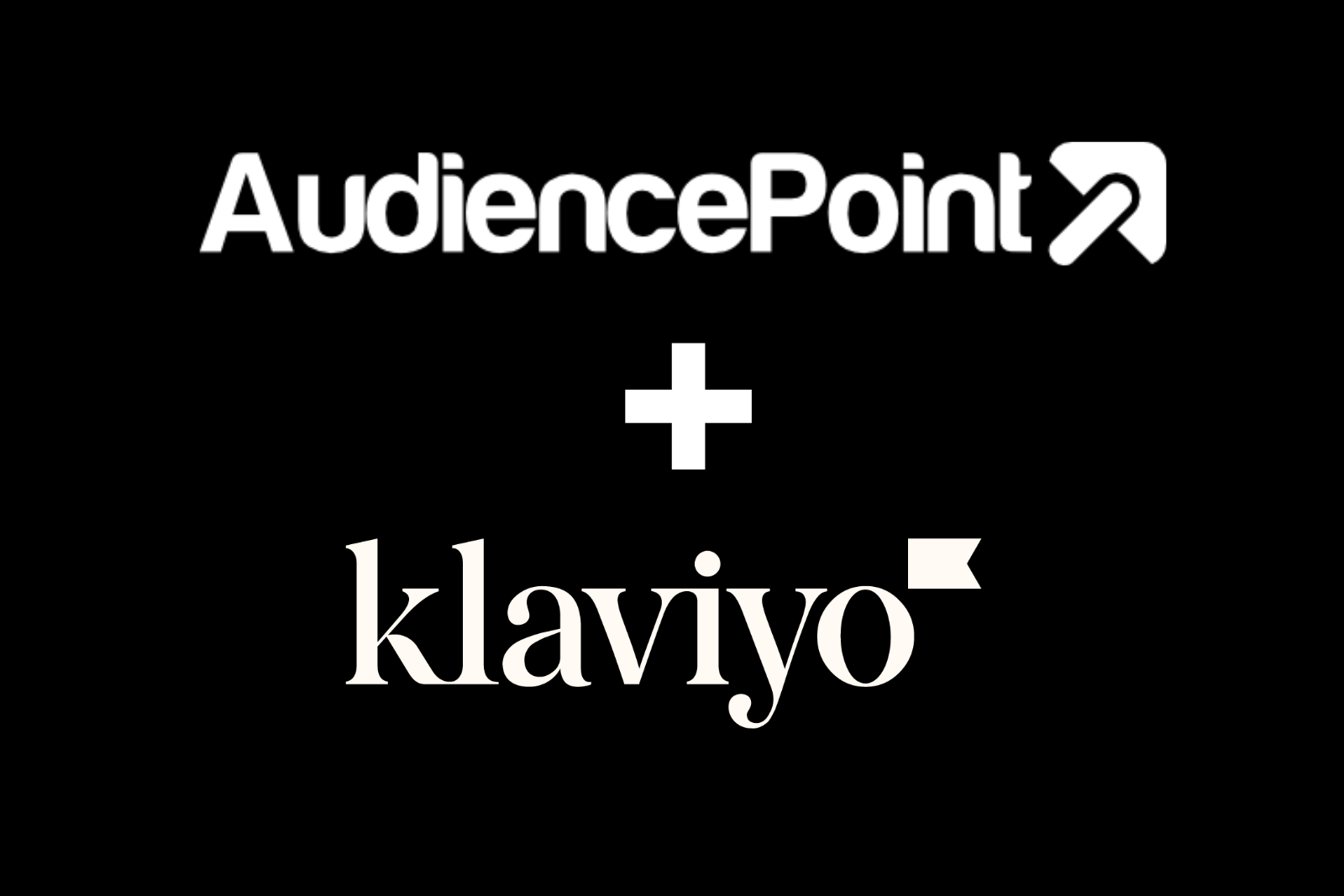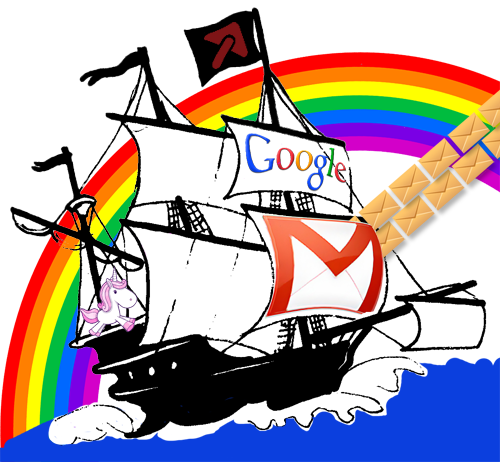AudiencePoint is thrilled to announce our new integration with Klaviyo! AudiencePoint is looking for partners to pilot our...
What Does Drip Marketing Mean?
Drip marketing refers to a strategy where a series of pre-scheduled, automated email messages—called drip emails—are sent to subscribers over a set period of time. The primary intent is to nurture leads, onboard new customers, or move prospects steadily down the marketing funnel through targeted, relevant communications. These campaigns operate behind the scenes, methodically delivering content that is personalized based on triggers like user behaviors, AI in Email Marketing, or specific time intervals.
The term “drip campaign” originates from the concept of watering plants using a slow “drip”—in email marketing, information is released gradually, drop by drop, to foster engagement without overwhelming the recipient. This measured approach ensures each interaction builds on the last, driving recipients toward a predefined goal, whether it’s increased product awareness, renewed engagement, or incremental conversions.
What is EDM (Electronic Direct Mail) Marketing? – A Definition of Drip Emails
A drip campaign is an automated set of emails sent according to a predetermined schedule or user actions. Drip emails are the individual touchpoints—a mix of educational, promotional, and reminder messages—designed to maintain consistent communication with your current and potential customers. This targeted strategy delivers the right message, at the right time, with precision and reliability, making it especially effective for nurturing a potential customer before conversion.
Electronic direct mail marketing is a broader strategy that integrates drip campaigns as one of its key tactics, combining personalized email campaigns with other media channels to engage and build relationships with both current and potential customers.
In the context of edm marketing and electronic direct mail, automation and multi-channel strategies are used to reach audiences across email, social media, print, and more, with drip campaigns serving as a core component of these comprehensive digital marketing efforts.
Origins of the Term “Drip” and How the Technique Works
The “drip” analogy stems from horticulture, where slow and steady watering yields healthier plants. In marketing, it’s about pacing communication strategically: instead of hitting inboxes with large batch messages, you nurture recipients through carefully timed touches. Building and maintaining a quality subscriber list is essential for effective segmentation and targeted messaging. It is important that users opt in to receive communications, ensuring that only opted-in subscribers are included in the list segmentation process. Automation is critical—sophisticated platforms like AudiencePoint enable marketers to effortlessly segment lists, trigger messages by user behavior, and ensure maximum relevance with each send.

The Core Purpose of Drip Campaigns in an Email Marketing Campaign
At the heart of every effective drip campaign lies the goal of building relationships and nurturing audience connections. Unlike generic blasts, these campaigns use personalized emails to map communications to each subscriber’s unique journey, fostering customer loyalty and brand loyalty. This not only escalates open and click rates but also helps maintain strong inbox placement—a KPI that’s often overlooked but is essential to campaign success in today’s crowded digital landscape.
Key Benefits of Using Drip Campaigns for Businesses
For enterprise marketers, the benefits of drip marketing are substantial. These campaigns drive engagement automatically, reducing manual effort while improving personalization at scale. Automated drip marketing also offers significant cost effectiveness compared to manual efforts, saving on resources and traditional advertising expenses. More importantly, leveraging advanced tools like AudiencePoint provides actionable insights into deliverability and inbox placement—empowering teams to identify which emails land in spam and rectify issues proactively. By tracking key metrics and gathering relevant data, marketers can make informed decisions to optimize future campaigns and resource allocation. As inbox placement becomes increasingly mission-critical for brand reputation and revenue, aligning drip campaigns with broader marketing objectives ensures that efforts contribute directly to conversions, brand awareness, and customer engagement. A scientific, data-driven approach to drip marketing is non-negotiable for businesses seeking to thrive in the modern email marketing ecosystem.
How Do Drip Campaigns Work? (And How Many Emails Are in One?)
Email drip campaigns operate as an automated, structured sequence of messages, delivered to a subscriber over a predefined period or based on user behaviors. Drip campaigns are a type of email marketing campaign, and are part of a broader strategy that includes various email campaigns designed to engage and convert subscribers. These types of drip campaigns allow marketers to nurture leads, onboard new users, or re-engage lapsed customers by sending highly relevant content at the right time. Typically, the number of emails in a drip campaign ranges from three to ten, but this can vary depending on the campaign goal, user journey complexity, and audience segmentation strategies. Effective segmentation ensures the campaign message is tailored to the target audience, and maintaining a consistent marketing message throughout the email campaign is crucial for maximizing engagement and conversions.
How Many Emails Are in a Drip Campaign?
The optimal number of emails in a drip campaign is dictated by your campaign’s objectives and your audience’s engagement patterns. Drip campaigns help marketers effectively reach their audience by delivering timely, relevant content. For example, a brief welcome sequence might include three to five tightly themed messages, while an advanced product education or re-engagement series could easily involve seven to ten personalized touchpoints. What matters most is that each message delivers unique value and progresses the subscriber toward your desired outcome—whether that’s a sale, a demo sign-up, improved conversion rates, or increased product adoption.
Enterprise email marketers should be wary of both underwhelming their subscribers with too few communications and overwhelming them with too many. When considering open and click rates, using a catchy subject line is crucial to grab attention and increase open rates. Leveraging drip campaign templates can provide a proven starting point, while a robust analytics solution like AudiencePoint enables easy testing and optimization to find that sweet spot in volume and cadence. Sophisticated marketers can—and should—monitor not just deliverability, but also inbox placement rates to ensure each email in their series is making it to the subscriber’s main inbox for maximum business impact.
Automation and Trigger-Based Sending
Modern drip campaigns are powered by automation, taking full advantage of trigger-based sending. This means each email is dispatched precisely when it’s most relevant—whether that’s immediately after a user signs up (with automatic emails such as welcome messages), following an abandoned cart, after a period of inactivity, or as shipping confirmations triggered by order fulfillment. These triggers are designed around subscriber behavior and lifecycle stage, making each touchpoint more timely and impactful. Automation tools manage and optimize email communications, ensuring that every message is consistent and tailored to customer engagement. Automation tools remove manual effort and improve consistency, but true performance comes from data-driven adjustment—something AudiencePoint excels at by providing advanced inbox monitoring, allowing you to course-correct in real time.

Drip Campaign Templates and Customization
While drip campaign templates offer a valuable launching pad, savvy enterprise marketers know the gold lies in customization. Adapt the sequence, messaging, and timing to reflect your brand voice, value proposition, and subscriber journey stages. Don’t simply rely on the out-of-the-box flow—audiences today expect personalization and relevance at every touchpoint. Use campaign analytics to segment your list, test variables like subject line and send times, and optimize based on actual engagement and inbox placement data. To grow your subscriber list, consider offering a lead magnet as an incentive, and remember there are multiple ways to encourage users to sign up and join your list. AudiencePoint empowers you to act on these insights with enterprise-level agility and precision, so every campaign drives measurable ROI.
Drip Campaign vs. Email Sequence: What’s the Difference?
Drip campaigns and email sequences are often used interchangeably, but they serve distinct purposes in enterprise email marketing programs. The main difference and key differences between drip campaigns and other types of email sequences lie in their level of automation, targeting, and how they are triggered. In essence, a drip campaign is designed to automatically send a pre-set series of emails to subscribers at scheduled intervals or in response to specific triggers, typically focusing on nurturing leads or onboarding customers. This approach stands in contrast to traditional email marketing, which generally involves sending one-off, mass emails to a broad audience with less personalization and automation. In contrast, an email sequence refers to any set of emails sent to a recipient in a determined order—these may be manually set up, event-driven, or part of a broader marketing automation strategy. The crucial difference lies in how these series are triggered and the degree of automation involved.
How Do Drip Campaigns Compare To Nurture Campaigns and Automated Sequences?
A drip campaign delivers a steady and often time-based flow of pre-written messages tied to a particular goal, such as education, onboarding, or re-engagement. Drip campaigns are a key part of broader marketing efforts and marketing campaigns, helping to ensure consistent messaging and branding across touchpoints. These campaigns shine in situations where consistent, incremental communication is needed—picture a welcome series for new subscribers or reminders for a product trial.
Nurture campaigns, on the other hand, are purpose-built to guide leads down the funnel by dynamically adapting to recipient behavior and engagement, often drawing on deeper personalization and data signals. Nurture and automated sequences frequently utilize multiple marketing channels, such as email, social media, and SMS, to maximize customer engagement and reach.
Automated sequences act as a catch-all term, including both drip and nurture campaigns, but can also refer to highly complex, multi-path journeys leveraging integrations with CRM data and cross-channel signals for even greater sophistication.
When Should You Use Drip Campaigns Versus Other Sequences?
For B2B or B2C enterprise marketers striving for operational efficiency and scalable lead management, drip campaigns are ideal for scenarios requiring consistency: think post-event follow-ups or new customer onboarding, where each contact—whether existing and potential customers, current customers, or new customers—should receive the same core information.
Nurture campaigns are better suited for accelerating the buyer journey, leveraging behavioral and demographic data to create hyper-personalized experiences. These campaigns also play a crucial role in improving customer retention by building long-term relationships and encouraging ongoing engagement.
Automated sequences become invaluable when your business demands omnichannel touchpoints, branching decision logic, and integration with complex technology stacks.
Examples That Clarify the Differences
Consider these examples: A SaaS company uses a simple drip campaign to send five onboarding emails, delivered every two days, to all trial users. Meanwhile, its nurture program leverages a dynamic email sequence where the content adapts based on user actions—like opening prior emails or attending webinars. If a prospect engages with in-depth content, they’re routed to a special sequence offering a product demo. Automated sequences might tie these strategies together, offering seamless transitions between email, SMS, or even direct mail within the same workflow. EDM marketing can take various forms, integrating other channels and other marketing channels such as social media, PPC, display advertising, remarketing, SMS, and print. By leveraging multiple media channels, you can create a more comprehensive and effective communication strategy that reaches audiences across different platforms.
Regardless of your approach, the most advanced enterprise marketers gain a further edge with AudiencePoint. By harnessing real-time inbox placement analytics, you move beyond mere delivery stats to ensure each message achieves true inbox visibility—vital for optimizing the impact of both drip and nurture campaigns. Only then can you reliably boost engagement, revenue, and long-term loyalty from every intelligent sequence you deploy.
Drip Campaign Examples and Types: Inspiration for Your Next Campaign
Unlocking the full potential of drip campaigns means understanding both their diversity and the real-world impact they can drive for enterprise email marketers. Drip campaigns are a key part of a digital marketing strategy and an edm marketing strategy, helping brands reach and nurture a large group of subscribers through multi-channel campaigns. Let’s explore the wide range of drip campaign examples, from tried-and-true onboarding sequences to cross-channel engagement strategies that blend email with social media signals. A holistic approach is needed to integrate drip campaigns with other email marketing tactics for maximum effectiveness. Drawing from industry best practices and the latest advances in targeting, these insights will empower you to elevate your automation strategies and set your brand apart in crowded inboxes.

What Are the Different Types of Drip Campaigns for Existing and Potential Customers?
Drip campaigns are not one-size-fits-all. Brands deploy targeted sequences tailored to the recipient’s stage in the customer lifecycle, specific behaviors, or business objectives. Common types include:
- Welcome Drip Campaigns: A sequence triggered after a subscriber joins your list, welcoming them, introducing your brand, and guiding them toward a first action or purchase.
- Onboarding Drip Campaigns: Designed for new users or customers to ensure adoption, educate with how-to content, and minimize early churn. These can also be triggered by actions such as signing up for free trials.
- Re-engagement Drip Campaigns: Target dormant subscribers with incentives, content highlights, and transparent opt-out options to rekindle interest and clean your list.
- Abandoned Cart Drip Campaigns: Automate follow-ups when a purchase isn’t completed, offering reminders, testimonials, and even time-limited discounts.
- Post-purchase/Nurture Drip Campaigns: Foster loyalty through thank-you notes, user tips, and upsell or cross-sell content after a transaction.
- Event or Renewal Drip Campaigns: Remind users about upcoming renewals, policy expirations, or event invitations through a well-timed sequence.
- Product Launch Drip Campaigns: Coordinate email sequences to build anticipation, announce, and promote a new product launch, often integrating with other marketing channels.
Drip campaigns can include a variety of content types, such as educational emails, promotional offers, and even a blog post to provide in-depth information or real-world examples.
Segmentation is key for personalization—recipients can be grouped based on criteria like demographics, engagement level, or spending habits to ensure the right message reaches the right audience.
Successful Email Drip Campaign Examples
Industry leaders leverage the power of advanced automation and data-driven insights to execute highly effective drip campaigns:
- Software Onboarding Sequence: A leading SaaS company uses a 7-part onboarding drip to walk users through setup, usage tips, and support resources—achieving a 30% increase in product activation rates. The campaign segments both existing users and potential clients, tailoring content to each group.
- Re-Engagement Campaign: An enterprise retailer reactivated 21% of dormant users by sending a series of personalized recommendations and exclusive offers, identified through behavioral data analytics. These campaigns specifically targeted potential customers based on their browsing habits and previous interactions.
- Cart Abandonment Recovery: By implementing a three-email series highlighting product reviews, inventory scarcity, and easy checkout, an e-commerce giant recaptured 12% of abandoned carts by focusing on both returning shoppers and potential clients.
Each campaign was successful because it used responsive timing, data-driven personalization, and closely monitored engagement signals to optimize deliveries and content variations. Marketers also leveraged browsing habits and life goals to segment audiences and personalize drip campaigns for maximum relevance.
How Do You Integrate Drip Campaigns With Social Media?
The most effective marketers blend email automation with drip campaign social media touchpoints. Integrating social media marketing and timely social media posts with your drip campaigns can significantly boost engagement and reach. For example, leverage behavioral triggers from social media interactions—such as a follower liking a product post or RSVP’ing to a webinar—to enter them into a tailored drip sequence that aligns with their interests. An initial email blast can serve as the first touchpoint, followed by a series of personalized emails, social media posts, and even text messages as part of a coordinated follow-up strategy. Likewise, amplify campaign reach by retargeting email recipients with matched social ads or organic posts at strategic intervals, creating cohesive journeys across platforms and improving multi-channel attribution.

What Are Best Practices for Building High-Performing Drip Campaigns?
Enterprise email success is rooted in several best practices:
- Hyper-personalization: Leverage behavioral, demographic, and firmographic data to dynamically tailor every touchpoint.
- Segment and suppress thoughtfully: Regularly monitor engagement to suppress inactives and reduce deliverability risk, using predictive signals—not just open rates—for smarter targeting. Understanding your market, including demographic, geographic, psychographic, and behavioral segments, is essential for effective audience segmentation and campaign success.
- Cross-channel orchestration: Sync email automation with SMS, push, and social retargeting to amplify reach and reinforce messaging. Consider implementing an edm campaign or edm marketing campaign, which are comprehensive, multi-channel strategies designed to create multiple touchpoints and maximize engagement.
- Ongoing performance optimization: Analyze inbox placement—are emails reaching the right folder, or are critical messages landing in spam? Continuously test the timing, frequency, and creative aspects. Choosing the right email service provider is crucial for automation, advanced audience segmentation, analytics, and scalability.
The next generation of drip campaign excellence comes from harnessing large-scale, real activity data to refine audience segments and optimize engagement—moving beyond vanity metrics to the true drivers of revenue.
Ready to revolutionize your drip campaigns? AudiencePoint delivers unparalleled analytics and actionable intelligence, drawn from billions of real inbox signals, to ensure your automated sequences reach more engaged inboxes and drive measurable impact. Empower your team with advanced re-engagement, real activity address validation, and smarter cross-channel targeting—so every drip campaign delivers ROI. Book your personalized AudiencePoint demo today and see why global leaders choose our platform to set a new standard in enterprise email performance.





